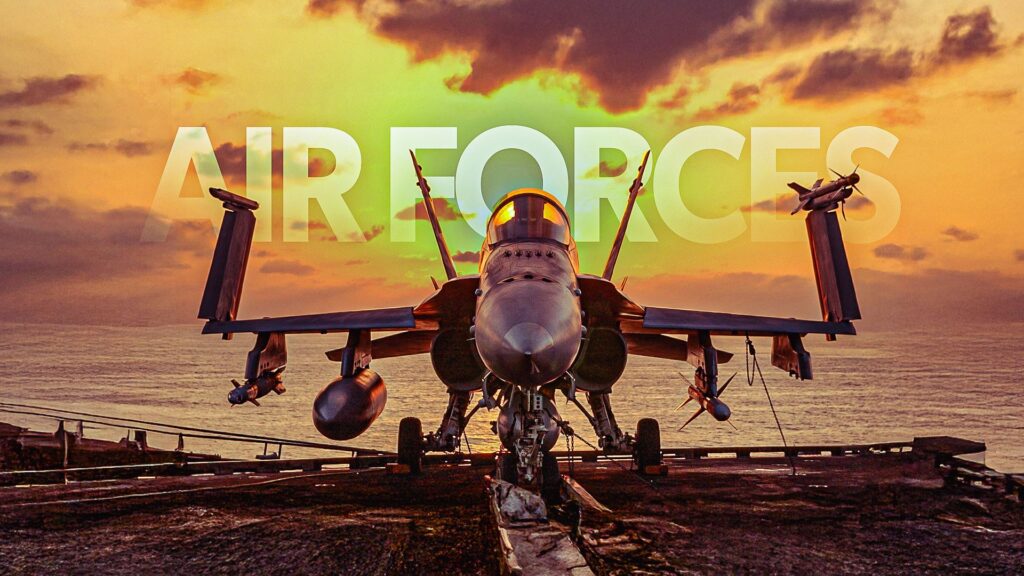
The landscape of global air power is evolving as nations reassess their fighter jet capabilities. As of March 2024, the United States maintains a dominant position with 2,651 operational fighters, while other nations are rapidly expanding their fleets. The introduction of advanced aircraft systems and the varying levels of force readiness are reshaping air superiority, highlighting differences in recruitment and technological advancements.
While the United States continues to lead, its air superiority is facing new challenges. Both Washington and Moscow are grappling with recruitment shortages that have resulted in undercrewed squadrons. In contrast, Beijing is aggressively expanding its fleet, as historical trend data from the World Population Review indicates. The emergence of smaller near-peer adversaries, equipped with long-range missiles and sophisticated uncrewed systems, poses increased threats to American forces.
Japan’s Air Defense: A Growing Fleet
The Japan Air Self-Defense Force (JASDF) is a key player in the Asian air power landscape, operating approximately 253 fighter jets. The JASDF employs a balanced inventory of 1,459 aircraft, including helicopters, transports, and trainers. The frontline fighters include the F-35A Lightning II, Mitsubishi F-2, and Mitsubishi F-15J.
The F-35A, produced by Lockheed Martin with assembly assistance from Mitsubishi Heavy Industries, is designed for stealth and long-range capabilities. The JASDF has positioned this advanced fighter as its primary air defense platform. The home-grown Mitsubishi F-2, tailored for Japan’s unique geographical challenges, complements this fleet with its ability to patrol vast ocean expanses.
Despite the introduction of the F-35, the F-15J remains a critical component of Japan’s air defense. With ongoing modernization efforts, these twin-engine fighters are being upgraded to share data seamlessly with newer aircraft. Looking ahead, Japan has ordered the short and vertical take-off capable F-35B to maximize its naval power projection from the helicopter carrier, Izumo.
India’s Diverse Fighter Fleet
India stands as a significant player in the global air power race, operating a diverse fleet of 578 fighters that reflects a blend of domestic and international designs. This eclectic inventory includes Russian Sukhoi Su-30MKIs, French Dassault Rafales, and indigenous HAL Tejas fighters.
In response to recent regional conflicts, India’s military has intensified its modernization efforts. The HAL Tejas is central to India’s future air combat strategy, with the more advanced Tejas Mark 1A entering production to replace aging MiG-21s. Additionally, the IAF’s Dassault Mirage 2000 jets are undergoing modernization to enhance their effectiveness.
India is also exploring partnerships with major defense manufacturers. Lockheed Martin has proposed a production line for the F-21, a customized variant of the F-16, while Russia is promoting an export version of the Su-57. The Indian Air Force is investing in upgrades for existing aircraft, including a ‘Super Sukhoi’ program to enhance performance and capabilities.
Russia’s Challenges and Transition
With a reported 1,147 fighters, Russia’s air force remains one of the largest globally. However, the ongoing conflict in Ukraine has exposed the disparity between the number of aircraft and their combat effectiveness. Advanced models like the Sukhoi Su-57 have yet to demonstrate their full potential in combat situations.
The conflict has shifted focus to drone capabilities, with the S-70 ‘Okhotnik-B’ stealth drone testing, though it faced setbacks in operational scenarios. The war has forced Russian fighters to adapt, relying more on long-range strikes rather than close air support due to increased risks on the front lines.
Despite these challenges, the Russian Aerospace Force boasts a significant workforce of approximately 170,000 personnel. The mix of Soviet-era jets and modern platforms forms a diverse tactical air inventory. However, production delays and sanctions have hampered efforts to modernize and maintain their forces effectively.
China’s Expanding Air Force
China has rapidly developed its air force, now boasting a fleet of 2,157 fighters. Central to this expansion is the J-20, a stealth fighter that symbolizes China’s ambition to compete with the US in advanced military aviation. The J-20’s design mirrors that of the US’s fifth-generation fighters, focusing on targeting high-value assets rather than traditional air-to-air combat.
The People’s Liberation Army Air Force (PLAAF) and the aviation branch of the People’s Liberation Army Navy are integral to China’s military strategy. The addition of new carrier capabilities, including the indigenous Shandong and the upcoming Fujian, signifies a significant leap in China’s naval aviation capabilities.
The Chinese fighter inventory also includes the nimble J-10 for air defense and the powerful J-16 for long-range strike operations. As China continues to modernize its air fleet, its military ambitions are becoming increasingly apparent on the global stage.
The global fighter jet inventory reflects a shift in air power dynamics, with nations reassessing their strategies and capabilities. As recruitment challenges and technological advancements reshape the landscape, the competition for air superiority continues to intensify among major world powers.






